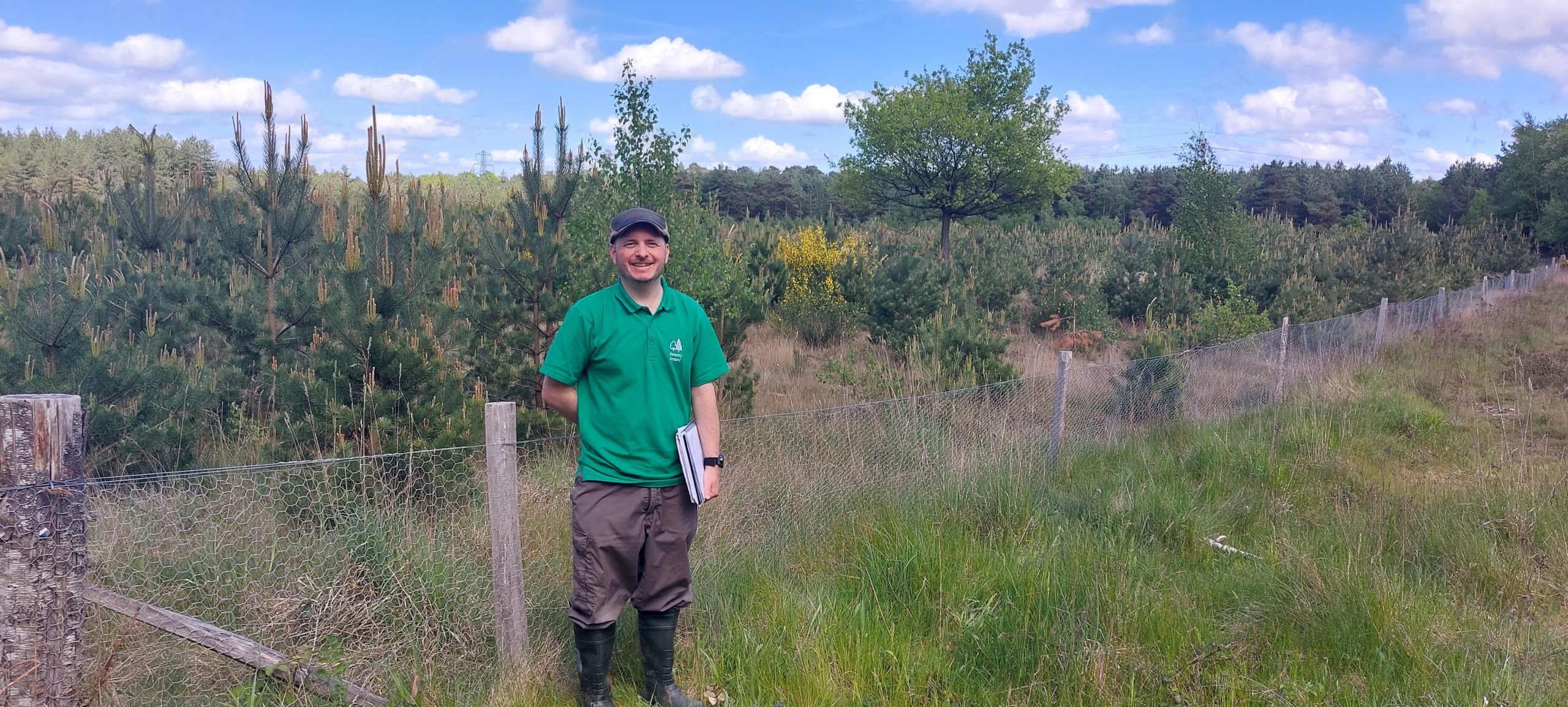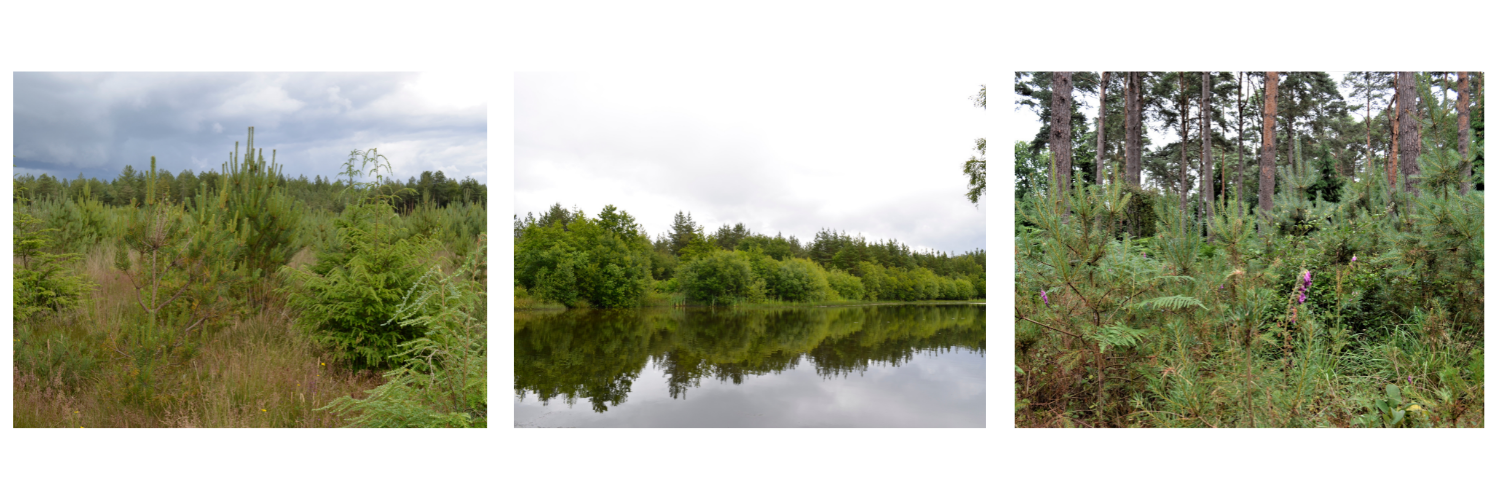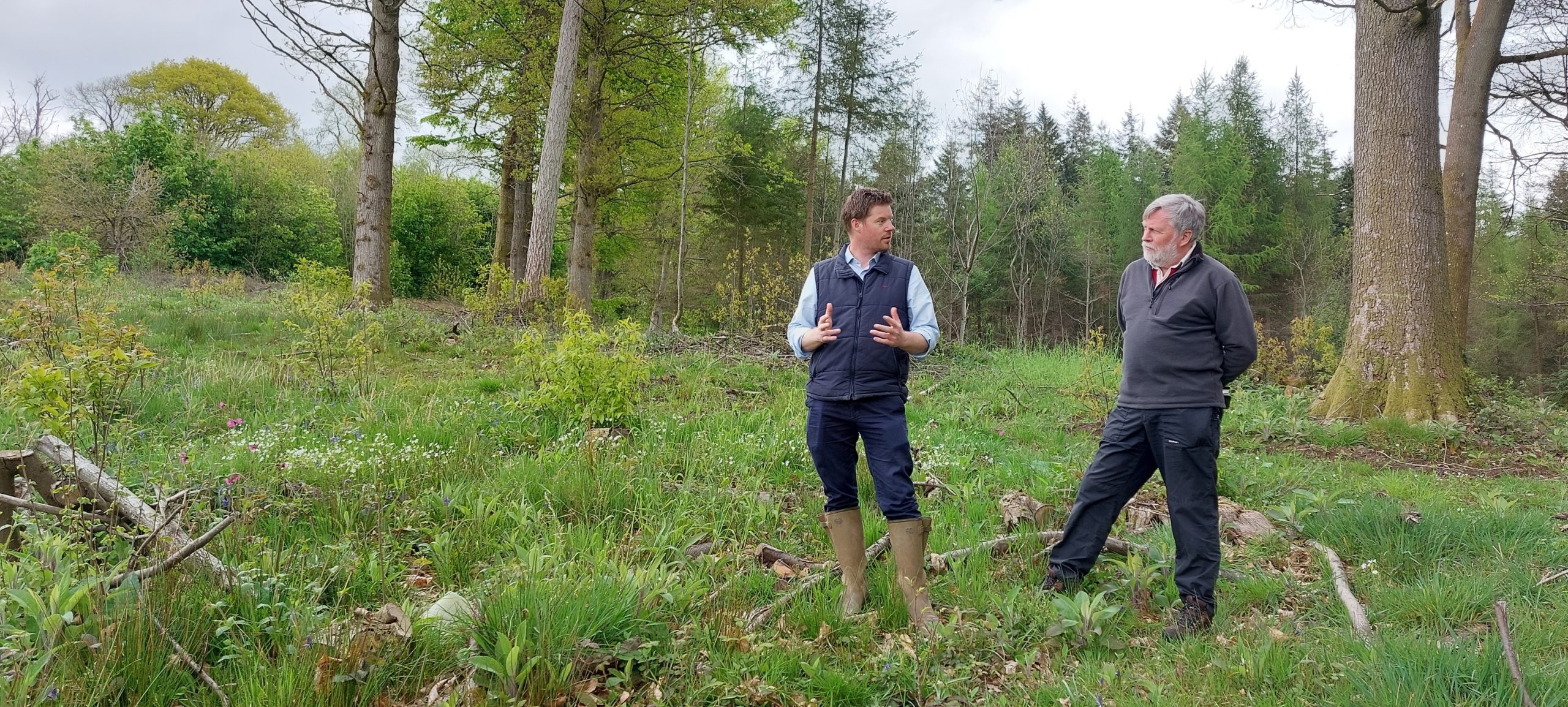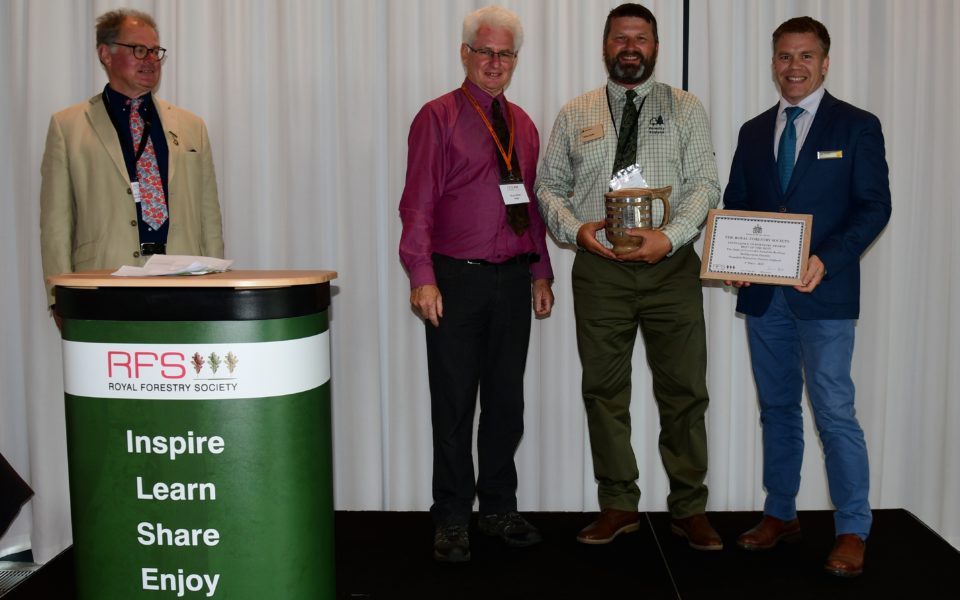Duke of Cornwall Award for Resilient Multipurpose Woodland: Best of the Best Award 2022
Awarded for woodlands managed for ecological and economic resilience. These include threats such as pests, diseases and climate change. Following five years of regional Excellence in Forestry Award the regions’ winners went head-to-head this year for the title Best of the Best.
1 Bramshill Plantation, Eversley, Hampshire
Managed by Forestry England’s South Forest District

Pictured: Michael Ullman at Bramshill Plantation, Forestry England’s South District Forestry Operations Manager
Bramshill Plantation covers 200 ha of a restored quarry in Hampshire.
Much of Bramshill Plantation has been excavated for gravel. Since 2000 it has been gradually restored. Open habitats are maintained across the landscape which has included creating ponds, and a mosaic of wooded areas.
The forest is close to built-up areas between Basingstoke, Reading and the Blackwater Valley conurbation. It is a popular among walkers, runners, dog walkers, horse riders, mountain bikers and nature watchers.
Biodiversity
Bramshill is also a nationally important Site of Special Scientific Interest (SSSI). It includes shallow mildly acidic ponds, associated mires and heathland.
The site is recognised as a priority site of national importance by the British Dragonfly Society.
Management maintains a balance between rotational forest management and its cycle of clearfell-restock. This provides a continual supply of open space suitable for breeding nightjar and woodlark.
Climate change
The conversion of selected stands to continuous cover silvicultural systems and the addition of more tree species is increasing resilience to the threat of rapid environmental change. The main tree species are Scots pine, Corsican pine and Austrian pine. Understory planting now includes broadleaved species. Radiata pine as well as western red cedar and western hemlock are also being planted
DEFRA funds have been complemented by external funding streams including The Heritage Lottery Fund (HLF) via The Hampshire Heathland Project. Landfill Tax supported projects for pond creation and rare plant conservation.
More information here

Above: from left, Bramshill restock, ponds and underplanting of mature Scots Pine
2 Aconbury and Wallbrooks Wood, Herefordshire
Owned and managed by The Duchy of Cornwall

Pictured: Ben Anderson, Deputy Head Forester, in Aconbury Wood with the judges
The 138ha Aconbury Wood and adjoining Wallbrooks Wood are approximately four miles south of Hereford. They were purchased by the Duchy of Cornwall in 2000.
Aconbury Wood is extensively used by the local population through permissive access to most of the wood. Wallbrooks Wood is not open to the public on a regular basis due to site sensitivities. Aconbury Wood contains a large hill-top Iron Age fort, a scheduled Ancient Monument.
Tree species
Oak, ash and sweet chestnut are the dominant broadleaves but many other broadleaved species are represented. There are also significant components of Douglas fir, Norway spruce, European larch and western hemlock. Recently, some stands have been under-planted with beech, hornbeam, hazel and European silver fir.
Oak, ash and sweet chestnut ‘Plus Trees’ (recommended for breeding due to particular characteristics) have been included in coordination with the Future Trees Trust.
Provenance of planting material is diverse. Stock from good quality selected seed stands in England and Wales are preferred alongside plants grown locally from acorns and sweet chestnuts collected on the estate. Some improved seed sources from France and Germany have also been used.
Continuous cover forestry is being used to create resilient woodlands.
Biodiversity
The woods contain areas of both Ancient Semi-Natural Woodland (ASNW) and Plantation on Ancient Woodland (PAWS). Features include veteran trees, lime stools and a wide array of Ancient Woodland indicator flora. The Duchy has an ACTIVE project to improve habitat for the wood white butterfly.
More information available here


Receiving ntheir awards
Left: Duke of Cornwall 1: Bramshill Plantation, Eversley, Hampshire. From left, RFS President Sir James Scott, judge Bryan Elliott, receiving award Steve Eyres Forestry England and sponsor Mark Townsend from Savills
Right: Duke of Cornwall 2: Aconbury and Wallbrooks Wood, Herefordshire. From left: RFS President Sir James Scott, judge Bryan Elliott, sponsor Mark Townsend from Savills and Ben Anderson and Ray Harris from Duchy of Cornwall
Thanks to our sponsor


